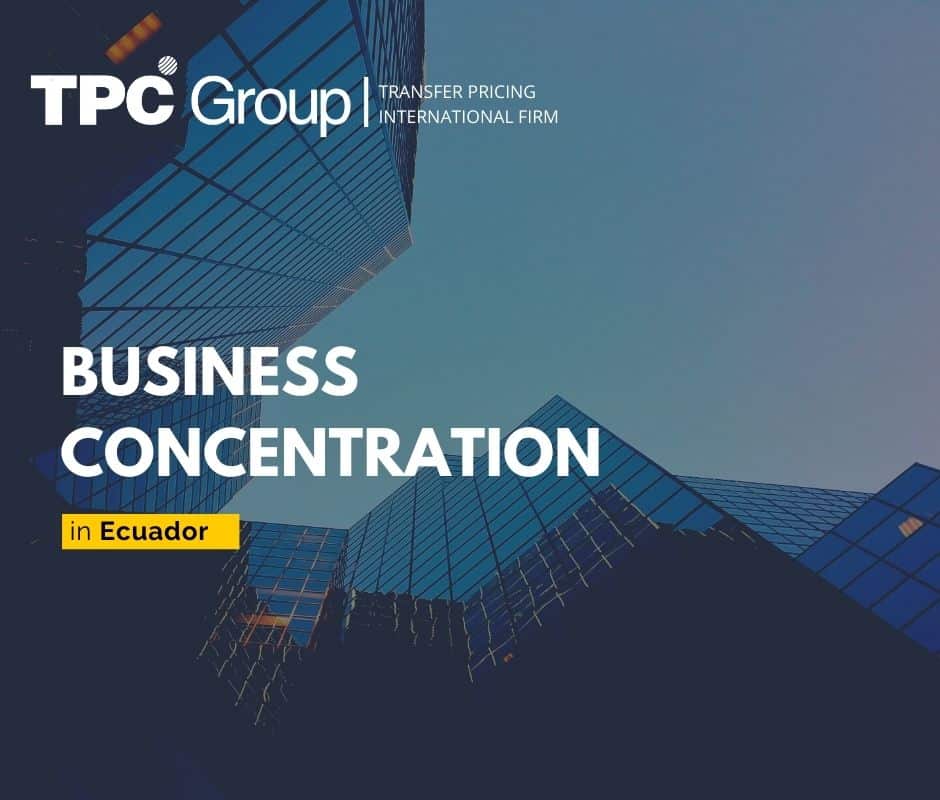What is a Business Concentration?
Business concentration is the unification of two or more companies to expand their capacity and market power to finally have a common benefit, often being the consumer the most affected.
Main types of Business Concentration
Among the different types of business concentration that exist, we distinguish horizontal concentration and vertical concentration:
- Horizontal concentration: It occurs with companies working in the same sector and have the purpose of eliminating competition.
- Vertical concentration: It results from companies that complement their productive activity to improve their profitability.
Business concentration in Ecuador and regulatory measures
In Ecuador, there are regulatory measures to prevent a business concentration that significantly affects the final consumers. Below are the main pronouncements, laws, or regulations:
Constitution of Ecuador
Article 284 of the Constitution of the Republic establishes the objectives of economic policy, among which are: to ensure an adequate distribution of income and national wealth; to encourage national production, systemic productivity, and competitiveness, the accumulation of scientific and technological knowledge, strategic insertion into the world economy and complementary productive activities in regional integration; and, to maintain economic stability, understood as the maximum level of production and employment sustainable over time.
Article 304 number 6 of the Magna Carta establishes that the commercial policy will have the objective of avoiding monopolistic and oligopolistic practices, particularly in the private sector, and others that affect the functioning of the markets.
Ley Orgánica de Regulación y Control del Poder de Mercado – LORCPM (Organic Law of Regulation and Control of Market Power)
This Law was published in the Official Registry of Ecuador, Supplement 55, on October 13, 2011, states among its main targets to generate healthy and free competition in the different markets where different economic operators interact. The Law authorizes, denies, or subordinates concentration operations based on a study that identifies the market power obtained by the different economic operators after the merger, and how this may affect the correct functioning of the market generating some type of unilateral practices which the competition could not respond effectively, resulting in a negatively affected consumer paying more for the same product or receiving it with lower quality.
Below, Articles 1 and 2 of the LORCPM Law:
- The target of the present law is to avoid, prevent, correct, eliminate, and sanction the abuse of economic operators with market power; the prevention, prohibition, and sanction of collusive agreements and other restrictive practices, the control and regulation of economic concentration operations, and the prevention, prohibition and sanction of unfair practices, seeking efficiency in the markets, fair trade and the general welfare of consumers and users for the establishment of a social, supportive and sustainable economic system.
- All economic operators, whether natural or legal persons, public or private, national or foreign, with or without profit-making, who currently or potentially carry out economic activities in all or part of the national territory, as well as the guilds that group them and those who carry out economic activities abroad, are subject to the provisions of this law, to the extent that their acts, activities or agreements produce or may produce negative effects on the national market. The behavior or actions of an economic operator shall be attributable to him and the operator controlling him when the behavior of the former has been determined by the latter. This law includes the regulation of market distortions originated in geographical and logistic restrictions, as well as those resulting from productive asymmetries among economic operators.
Competition authorities resolving concentration issues
Article 42 of the Law provides that the Superintendent is the highest administrative, resolution, and sanctioning authority, being responsible for the legal, judicial, and extrajudicial representation of the Superintendency.
Article 37 – Powers of Superintendency of Control of the Market Power – It is incumbent upon the Superintendency of the Market Power Control to ensure transparency and efficiency in the markets and promote competition, prevention, investigation, knowledge, correction, sanction, and elimination of market power abuse, agreements, and restrictive practices, unfair conducts contrary to the regime provided for in this Law; the control, authorization, and if applicable, sanction of the economic concentration. The Superintendency of Market Power Control will have the power to issue rules, the most of them are mandatory in the matters of its competence, without amending the legal provisions and regulations issued by the Regulatory Board.
Article 44 states that one of the Superintendent’s powers is to absolve consultations on the obligation to notify operations of economic concentration. At present, the Superintendency has a First Instance Resolution Commission made up of members appointed by the Superintendent, who is responsible for knowing and resolving requests for authorization of mandatory notification of concentrations based on the final report filed by the Intendancy of Control of Concentrations.




